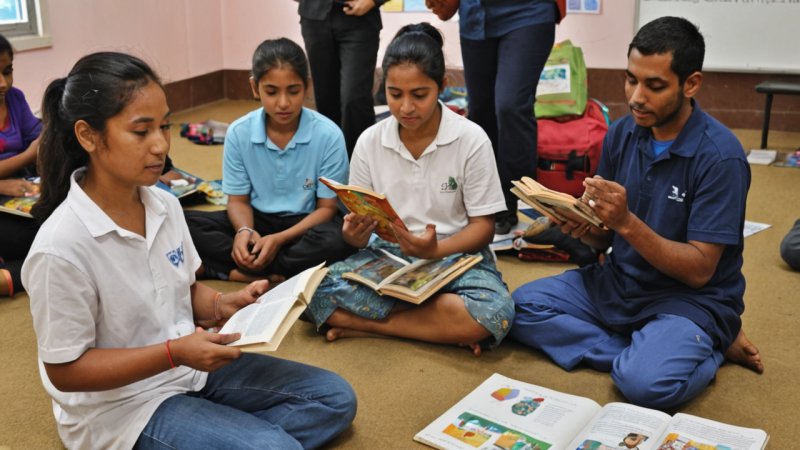1. Understand the Community's Language
Before developing a literacy program, it is crucial to understand the primary languages spoken in the community. This will help in tailoring the program to meet the linguistic needs of the participants.
2. Incorporate Local Stories and Folklore
Using local stories and folklore can make learning more relatable and engaging. This not only enhances the literacy skills but also instills a sense of pride in local heritage.
3. Collaborate with Local Educators
Partnering with local teachers and educators can provide insights into culturally relevant teaching methods and materials, ensuring that the program resonates with the community.
4. Include Cultural Activities
Incorporating cultural activities such as music, art, and dance can create a lively learning environment. These activities can also serve as a medium to teach literacy skills in a fun and engaging way.
5. Utilize Community Resources
Make use of local libraries, community centers, and cultural organizations to provide resources and support for the literacy program. This not only enriches the program but also strengthens community ties.
6. Develop Bilingual Materials
Creating bilingual learning materials can help bridge the gap for participants who may be more comfortable in their native language. This approach promotes inclusivity and aids in comprehension.
7. Focus on Practical Skills
Literacy programs should not only focus on reading and writing but also on practical skills that participants can apply in their daily lives, such as filling out forms or understanding public signage.
8. Encourage Community Involvement
Engaging community members as volunteers or mentors can foster a supportive learning environment. It also encourages a sense of ownership and investment in the program's success.
9. Provide Ongoing Support and Resources
After the initial program, offering ongoing support through workshops, reading clubs, or tutoring can help sustain literacy development and encourage lifelong learning.
10. Evaluate and Adapt the Program
Regularly evaluating the program's effectiveness and making necessary adjustments based on feedback from participants can ensure that it remains relevant and impactful.
In summary, developing literacy programs that incorporate local culture is essential for fostering engagement and effectiveness. By understanding the community's needs and leveraging local resources, these programs can significantly impact literacy rates and overall community wellbeing.






